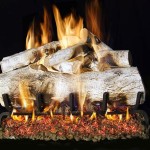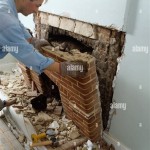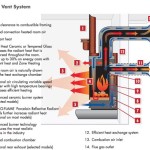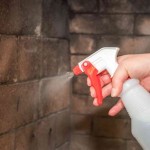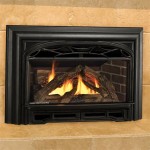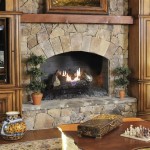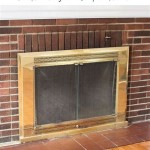Converting a Gas Log Fireplace Back To Wood Burning: A Comprehensive Guide
Many homes feature fireplaces initially designed for burning wood. Over time, some homeowners opt for the convenience of gas log inserts. However, circumstances might arise where reverting to a wood-burning fireplace becomes desirable again. This process requires careful assessment, potential modifications, and adherence to safety regulations. This article outlines the key steps involved in converting a gas log fireplace back to wood burning.
Assessing the Existing Fireplace and Chimney System
The initial stage involves a thorough inspection of the fireplace and chimney. This assessment determines the overall condition and identifies any necessary repairs or modifications required for safe wood burning. Primarily, the focus is on ensuring the structural integrity of the firebox, the proper functionality of the damper, and the cleanliness and integrity of the chimney flue.
The firebox should be examined for cracks, loose bricks, or deteriorated mortar joints. Any structural deficiencies must be addressed before proceeding. Cracks can allow hot embers and gases to escape, posing a fire hazard. Similarly, loose bricks can compromise the firebox's ability to contain the fire safely. Repairing these issues typically involves repointing the mortar joints or replacing damaged bricks.
The damper, located at the base of the chimney, controls airflow and prevents heat loss when the fireplace is not in use. It should open and close smoothly and create a tight seal when closed. A faulty damper can lead to significant heat loss during the winter months and may not effectively control airflow while burning wood. If the damper is damaged or corroded, it needs to be repaired or replaced.
Perhaps the most crucial aspect of the assessment is the chimney inspection. Over time, creosote, a highly flammable byproduct of wood combustion, accumulates on the inner walls of the chimney flue. A build-up of creosote poses a significant fire hazard. A professional chimney sweep should inspect and clean the chimney to remove creosote deposits. The chimney should also be inspected for cracks or obstructions that could impair its ability to vent smoke and gases properly. A chimney liner may be necessary if the existing flue is damaged or improperly sized.
Removing the Gas Log Insert and Associated Components
Once the fireplace and chimney have been assessed and deemed suitable for wood burning, the gas log insert and its associated components must be removed. This process requires careful disconnection of the gas line and removal of the logs, burner assembly, and any other related hardware.
Prior to any removal, the gas supply to the fireplace must be completely shut off at the main gas valve. It is strongly recommended that a qualified gas technician disconnect the gas line to ensure safety and prevent leaks. Improper disconnection can result in a dangerous gas leak. After the gas line is disconnected and capped, the gas logs, burner, and any supporting structures can be removed from the firebox.
After removing the gas logs and burner assembly, any remaining attachments, such as electrical connections for remote controls or blowers, must be disconnected. The firebox should be thoroughly cleaned to remove any residual debris or soot accumulated during gas log usage.
Following the removal of the gas log insert, a thorough inspection of the firebox floor is required. Many gas log inserts utilize sand or vermiculite to help distribute heat. This material needs to be removed to expose the original firebox floor. The firebox floor should then be inspected for any cracks or damage and repaired as needed. The installation of a grate, designed specifically for wood burning, is vital to ensure proper airflow beneath the logs.
Making Necessary Modifications for Wood Burning
After removing the gas log insert, certain modifications may be needed to optimize the fireplace for wood burning. These modifications can involve adjustments to the damper, the installation of a chimney liner, and ensuring adequate ventilation in the room where the fireplace is located.
The damper should be inspected again to ensure it functions correctly. Sometimes, dampers are modified or partially blocked during gas log installation. Returning the damper to its original functionality is important for proper wood burning. The damper should be able to fully open to allow for adequate draft and completely close to prevent heat loss when the fireplace is not in use.
Depending on the condition of the existing chimney flue, the installation of a chimney liner may be necessary. A chimney liner is a metal or ceramic pipe that runs the length of the chimney, providing a smooth, insulated surface for the exhaust gases to travel. A properly sized chimney liner ensures efficient drafting, reduces creosote buildup, and protects the chimney structure from corrosive gases. Local building codes often dictate specific requirements for chimney liners, so it's essential to consult with a qualified professional.
Adequate ventilation is also crucial for safe wood burning. The fireplace consumes oxygen during combustion, and insufficient ventilation can lead to carbon monoxide buildup in the room. Ensure that there is a source of fresh air in the room, such as a slightly open window or an air vent. Carbon monoxide detectors should be installed in the home to provide an early warning of dangerous levels. Regular inspection and maintenance of the fireplace and chimney are important to ensure safe and efficient operation. This includes annual cleaning of the chimney to remove creosote and inspection of the firebox for any damage.

Want To Convert Gas Wood Fireplace Full Service Chimney

Want To Convert Gas Wood Fireplace Full Service Chimney
Convert To A Beautiful Wood Burning Fireplace
Convert To A Beautiful Wood Burning Fireplace

How To Convert A Fireplace Back Wood From Gas Hunker

Convert Fireplace To Wood Burning Stove Mantel Gas Back Bur Hearth

Want To Convert Gas Wood Fireplace Full Service Chimney

How A Gas Fireplace Is Converted To Wood Burning Unit We Love Fire

Wood Burner Conversion New Jersey Fireplaces Kjb

Convert Gas Fireplace To Wood

